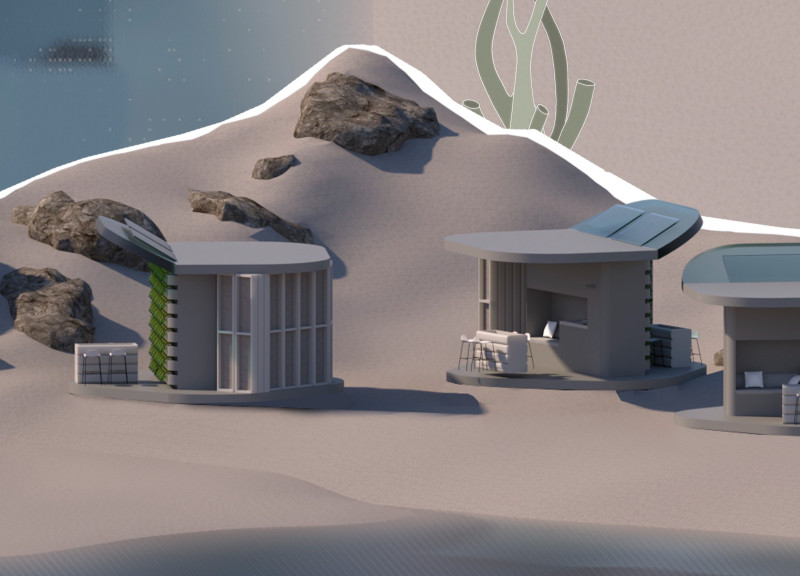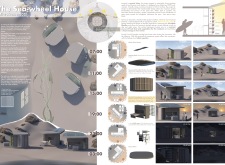5 key facts about this project
The Sea-wheel House is located on the island of Crete in Greece, designed to tackle current environmental issues through thoughtful architecture. The microhome focuses on reducing its carbon footprint by using materials sourced from the local area. Its functional design reflects values of sustainability, community, and flexibility, offering a solution for modern living in coastal environments.
Material Choice
The materials selected for the Sea-wheel House aim to lessen the ecological impact while ensuring durability. Recyclable plastics from the nearby beaches form the main structure of the building. This material choice addresses the problem of facade corrosion caused by salty sea air, which is a common concern for structures near the coast. Seaweed, used as insulation, not only provides effective thermal management but is also biodegradable, supporting the goal of sustainability in construction.
Interior Layout
The layout of the Sea-wheel House features adaptable spaces that serve various functions. A notable element is the wall with a vertical aquaponic system that moves with the sun. This arrangement optimizes natural light and contributes positively to the indoor environment by supporting the natural rhythms of the residents. The design includes both communal and private areas, such as a convertible bed-sofa at the front, ensuring comfort and practicality.
Sustainable Aspects
Key sustainable features of the Sea-wheel House include sloping glass solar panels and movable seaweed panels. The solar panels enhance energy efficiency by effectively capturing sunlight for energy needs. The movable seaweed panels can also be adjusted, allowing for varied space configurations and even creating outdoor seating. This flexibility helps residents engage more with their surroundings, promoting a lifestyle that values sustainability and interaction with nature.
Distinctive Feature
A remarkable aspect of the Sea-wheel House is the aquaponic system, providing fresh produce for occupants while also helping to regulate indoor temperatures during colder months. Its integration into the living space allows for interaction with the garden, fostering a connection to nature. This emphasis on blending living areas with natural elements creates a unique experience, encouraging self-sufficiency and enhancing everyday life.



















































